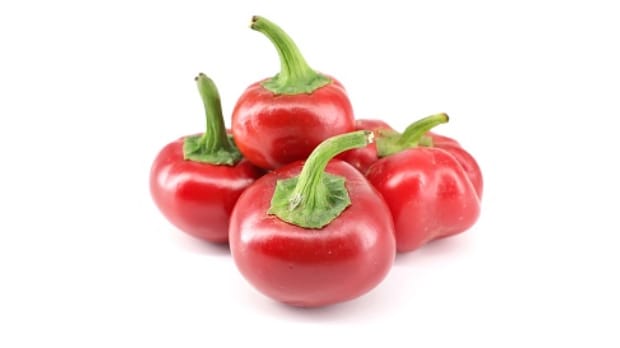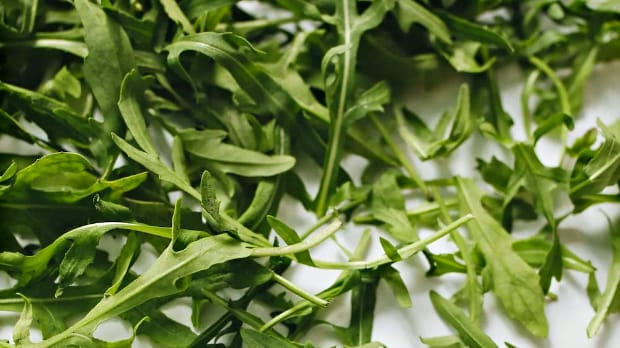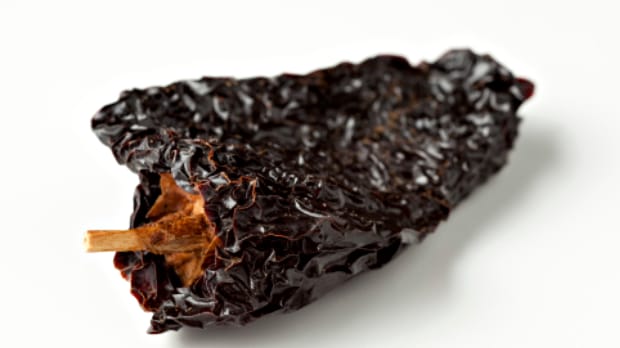What is a Cherry Pepper?
Do you know about cherry peppers? These little guys are sometimes referred to as cherry bombs due to their explosive flavor. They have a thick, firm texture and are similar in size and shape to small red tomatoes. But don’t let their petite appearance fool you, as they pack a significant punch when it comes to heat. On a scale from 1 to 10, their spiciness ranges from 4 to 6. So, if you’re looking to add some fiery flavor to your dishes, consider incorporating cherry peppers into your recipes. Whether you’re making salsa or topping off your pizza, these peppers will certainly add a flavorful kick to any dish.
Nutritional Benefits
Are you looking for a way to spice up your meals while still reaping nutritional benefits? Look no further than the cherry pepper! This vibrant produce packs a powerful punch when it comes to its health benefits. First and foremost, cherry peppers are a great source of vitamin C, which can help boost your immune system and protect your cells from damage. They also contain vitamin A, an important nutrient for maintaining healthy vision and skin.
But that’s not all – cherry peppers are also rich in fiber, which aids digestion and can help keep you feeling full and satisfied after meals. Plus, they contain capsaicin, the compound responsible for their spicy flavor, which has been shown to potentially aid in weight loss and reduce inflammation in the body.

So next time you’re looking to add some flavor to your dish, consider reaching for some cherry peppers – your taste buds and your body will thank you!
Types Available
If you are wondering what types of cherry peppers are available, you’re in the right place! There are several different varieties of cherry peppers, each with their own unique flavor and heat level. One type of cherry pepper is the sweet cherry pepper. As the name suggests, this variety is known for its mild, sweet flavor. It is a popular choice for use in salads, sandwiches, and as a garnish.

Another type of cherry pepper is the hot cherry pepper. This variety is much spicier than its sweet counterpart, and is often used to add heat to dishes like salsa, chili, and stir-fries.
A third variety of cherry pepper is the pickled cherry pepper. These peppers are typically preserved in vinegar and are often used as a condiment or topping for sandwiches and salads. No matter which type of cherry pepper you choose, be sure to experiment with different recipes to discover your favorite way to use them in your cooking!
What are the Best Uses?
Are you looking for a versatile veggie to spice up your meals? Look no further than the cherry pepper! These small yet mighty peppers pack a flavorful punch that can take your dishes to the next level. Here are some of the best uses for cherry peppers:
Pickling – Cherry peppers are perfect for pickling. Add them to your favorite brine recipe with other veggies like cucumbers or carrots for a tangy and delicious snack.
Stuffing – Cherry peppers are the ideal size for stuffing. Mix up a filling of cream cheese, garlic, and herbs and stuff them into the peppers for a tasty appetizer.
Pizza topping – If you love spicy pizza, cherry peppers make an excellent topping. Slice them up and sprinkle them over your favorite pizza for an extra kick of flavor.
Sandwiches – Add cherry peppers to your favorite deli sandwich for a zingy twist. They pair well with cold cuts and cheese, or even peanut butter and jelly if you’re feeling adventurous.
Sauces and salsa – Cherry peppers add a delicious heat to homemade sauces and salsas. Blend them up with tomatoes, onions, and cilantro for a spicy dip or drizzle. Overall, cherry peppers are a versatile and tasty addition to any meal. Try them out and see how they can spice up your cooking!
How do You Store a Cherry Pepper?
Are you a fan of Cherry peppers and wondering how to store them properly? Well, look no further, because we’ve got you covered! First, you should start by selecting the freshest peppers, with no bruises or soft spots. Then, wash the peppers thoroughly in cold water to remove any dirt or pesticides that may have been left behind.
After washing, dry the peppers with a clean towel or paper towel. Once the peppers are completely dry, you can store them in a plastic bag or container in the refrigerator.
But here’s a nifty tip: Before storing, cut off the stem of each pepper and remove the seeds, as this will help to prolong their freshness. Cherry peppers can last up to 2-3 weeks in the refrigerator if stored properly. So go ahead, stock up on those cherry peppers and enjoy their spicy and vibrant flavor in your next dish!
How to Prepare a Cherry Pepper
Looking for a little spice in your life? Cherry peppers might just be the answer. These vibrant red peppers pack a punch and add a burst of flavor to any dish. But how do you prepare them? Here’s a quick and easy guide:
Step 1: Rinse the cherry peppers under cold running water. Be sure to remove any dirt or debris from the surface.
Step 2: Using a sharp knife, carefully slice off the top of the cherry pepper, making a small incision. After removing the stem and any seeds inside with a spoon.
Step 3: If you’re looking for a milder flavor, you can further reduce the heat by removing the white membrane inside the pepper.
Step 4: Cherry peppers can be enjoyed raw or cooked. If you’re looking to spice up a dish, try adding sliced cherry peppers into soups, stews, or sauces for an extra kick.
There you have it! Preparing cherry peppers is simple. Don’t be afraid to experiment with these little gems and add some heat to your meals. As always, remember to wash your hands and cutting board thoroughly after handling hot peppers. Keep exploring and happy cooking!
When is Cherry Pepper in Season?
Are you a fan of the delectable and spicy cherry pepper? Well, if you are wondering about the best season to procure this delicious produce, wonder no more! The cherry pepper thrives in warm temperatures and it usually reaches its peak during the summer season. Summer is the ideal time for cherry peppers because it offers the perfect weather conditions for the plant to blossom and grow. From June through September, you will find an abundance of cherry peppers available, so hop on board and add this flavorful fruit to your cuisine.
Improve Your Health With Seasonal Eating
What to Serve Cherry Peppers With?
- Pasta
- Grilled chicken
- Roasted potatoes
- Mashed avocado
- Roasted cauliflower
- Quinoa salad
- Pita chips
- Grilled shrimp
- Grilled vegetables
- Arugula salad
What Traditional Cuisines Use Cherry Peppers?
Cherry peppers are commonly used in a variety of Italian and Mediterranean cuisines. In Italy, they are often used as a condiment on pizza or as an ingredient in sauces. In Greece, cherry peppers are often stuffed with feta cheese and herbs and served as an appetizer. They are also popular in Spanish cuisine, where they are used to make a spicy tomato sauce called salsa de cayena.
Tasty Recipes
- Stuffed Cherry Peppers
- Broccoli Rabe With Cherry Peppers
- Chicken Breast with Hot Cherry Peppers
- Chicken Scarpariello with Cherry Peppers
- Sweet Hot Cherry Pepper Relish
Key Takeaways
- Be sure to wear gloves when handling cherry peppers as their spiciness can irritate your skin.
- Select firm, vibrant cherry peppers for the best flavor.
- Cut the stem off the pepper before cooking or eating it.
- Cherry peppers can be eaten raw or cooked.
- To reduce the heat of a cherry pepper, blanch it in boiling water before using it in a recipe.
- Roasting cherry peppers brings out their sweetness and adds a smoky flavor.
- Add diced cherry peppers to dishes to add a mild kick of heat.
- When using cherry peppers in salads, opt for milder varieties such as sweet cherry peppers.
- Pickled cherry peppers are a great way to preserve them and enjoy their flavor for weeks or months.
References: The potential health benefits of Capsicum annuum L. (chilli pepper): a review | Evaluation of the Nutritional Composition and Biological Activity of Sweet and Hot Cherry Peppers (Capsicum annuum) | Bioactive Compounds and Health Benefits of Red Bell Pepper (Capsicum annuum L.) | Functional Properties and Health Benefits of Peppers (Capsicum spp.) |




